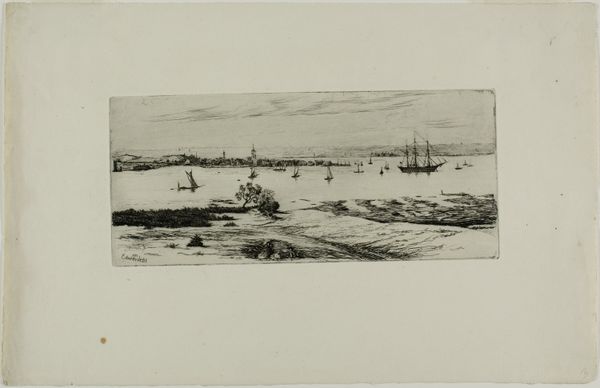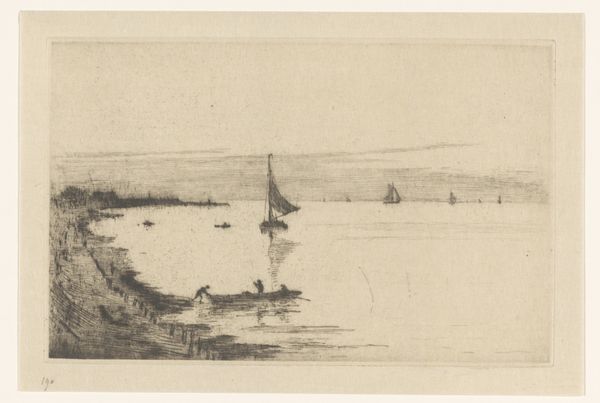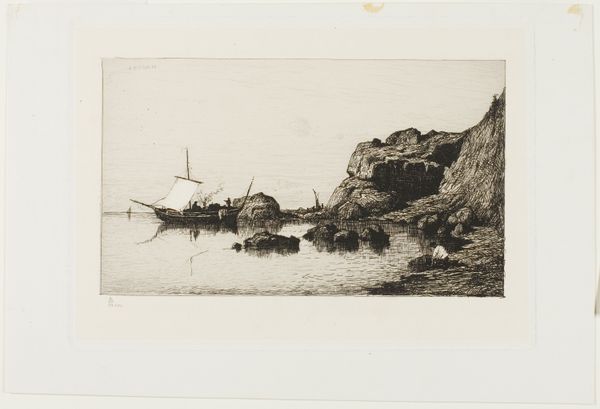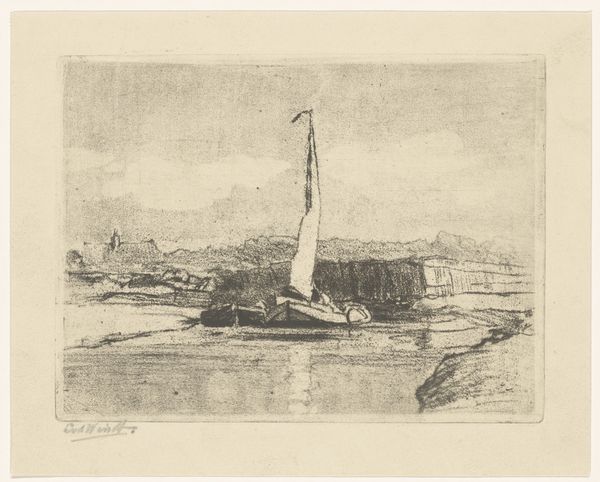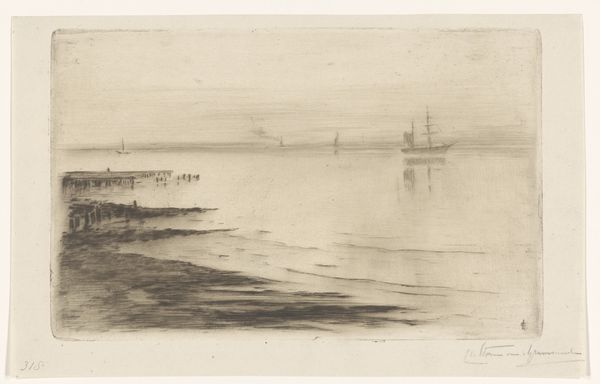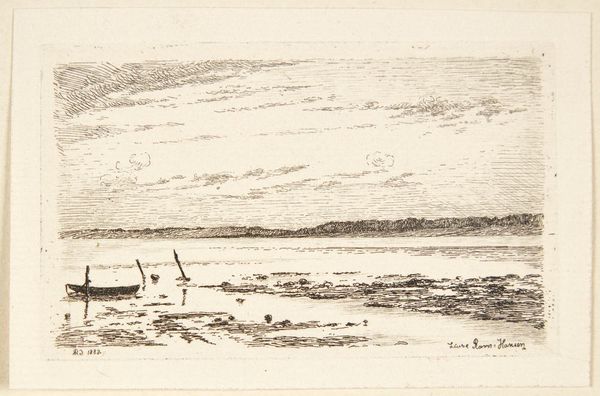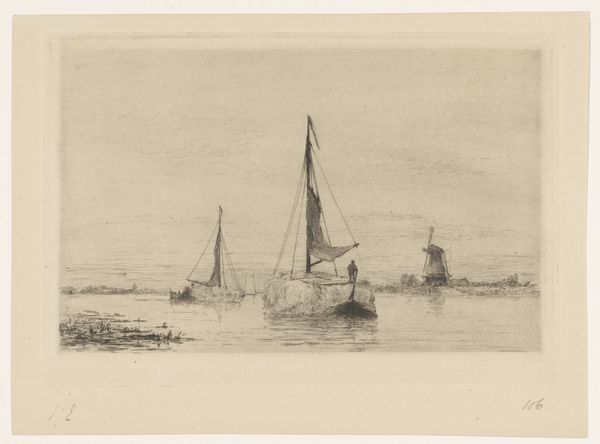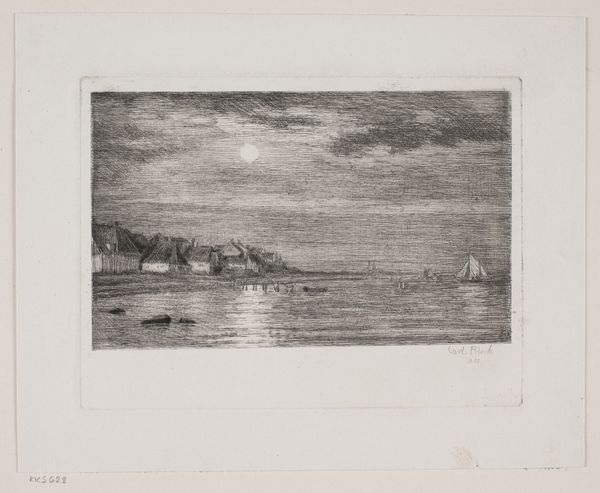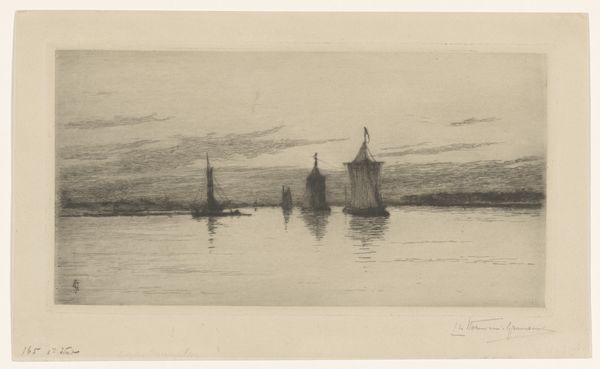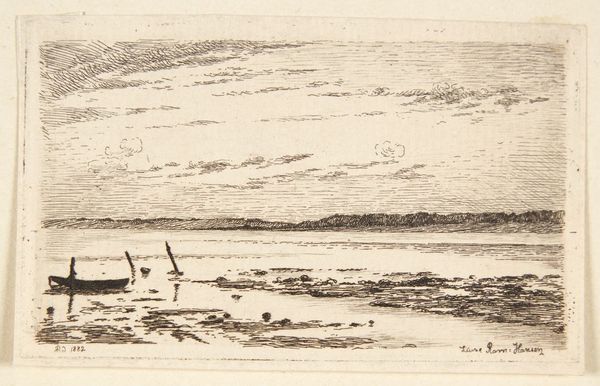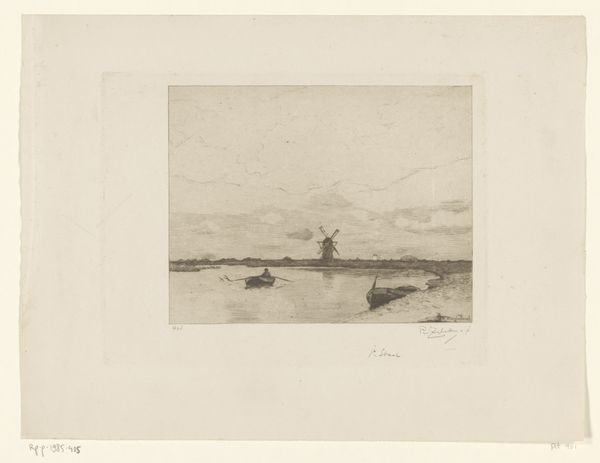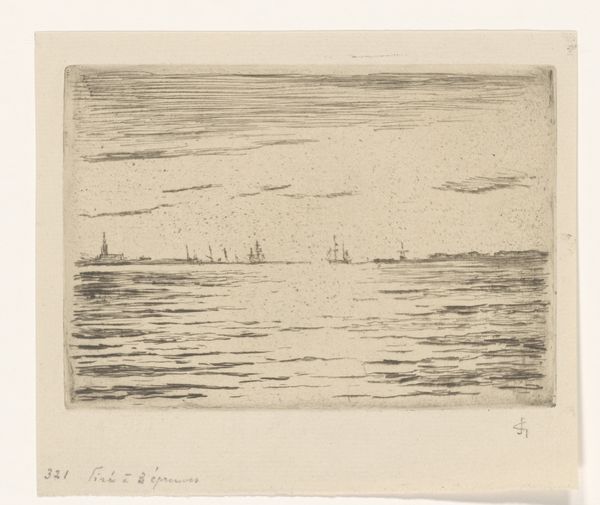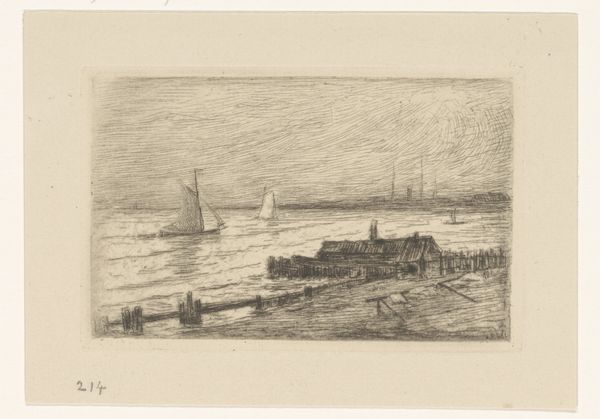
print, etching
# print
#
etching
#
landscape
#
realism
Dimensions: 82 mm (height) x 148 mm (width) (plademaal)
Editor: We're looking at Carl Bloch's "Strandparti ved Hellebæk," an etching from 1881. It’s a very subdued image, mostly grayscale. There’s a rocky shoreline and boats resting in the water. How do you interpret this work? Curator: This etching, though seemingly a simple landscape, can be seen as a subtle commentary on the Danish Golden Age's relationship with the sea. The boats are symbols of trade, exploration, and potentially even exploitation, when viewed through a postcolonial lens. Who benefits from the implied voyages in the artwork, and at what cost? Editor: I didn't think about the implications of the boats themselves. So, are you saying that even in what appears to be a straightforward seascape, there's a layer of social and political commentary embedded? Curator: Absolutely. Realism, even in landscape, wasn’t neutral. Bloch, knowingly or unknowingly, captured a moment imbued with the complexities of his time. Consider who had access to leisure by the sea versus those who relied on the sea for survival and, potentially, faced its dangers. Editor: That makes me consider it from a completely different viewpoint now. I was just seeing the pretty picture, the landscape element. Curator: The pretty picture is deliberate, creating a narrative, even if the narrative may be an inadvertent one. It prompts us to question whose reality is being represented and whose is being ignored? Do you feel that it fairly represents all the voices in society, or has this artist simply re-entrenched existing inequalities? Editor: I now wonder whether its very ‘ordinariness’ is speaking volumes. I appreciate the historical and cultural considerations within what looks to me as simple, calm seascape. Curator: Indeed. That sense of place is anything *but* neutral; reflecting back on this now, what has caught your attention anew?
Comments
No comments
Be the first to comment and join the conversation on the ultimate creative platform.
